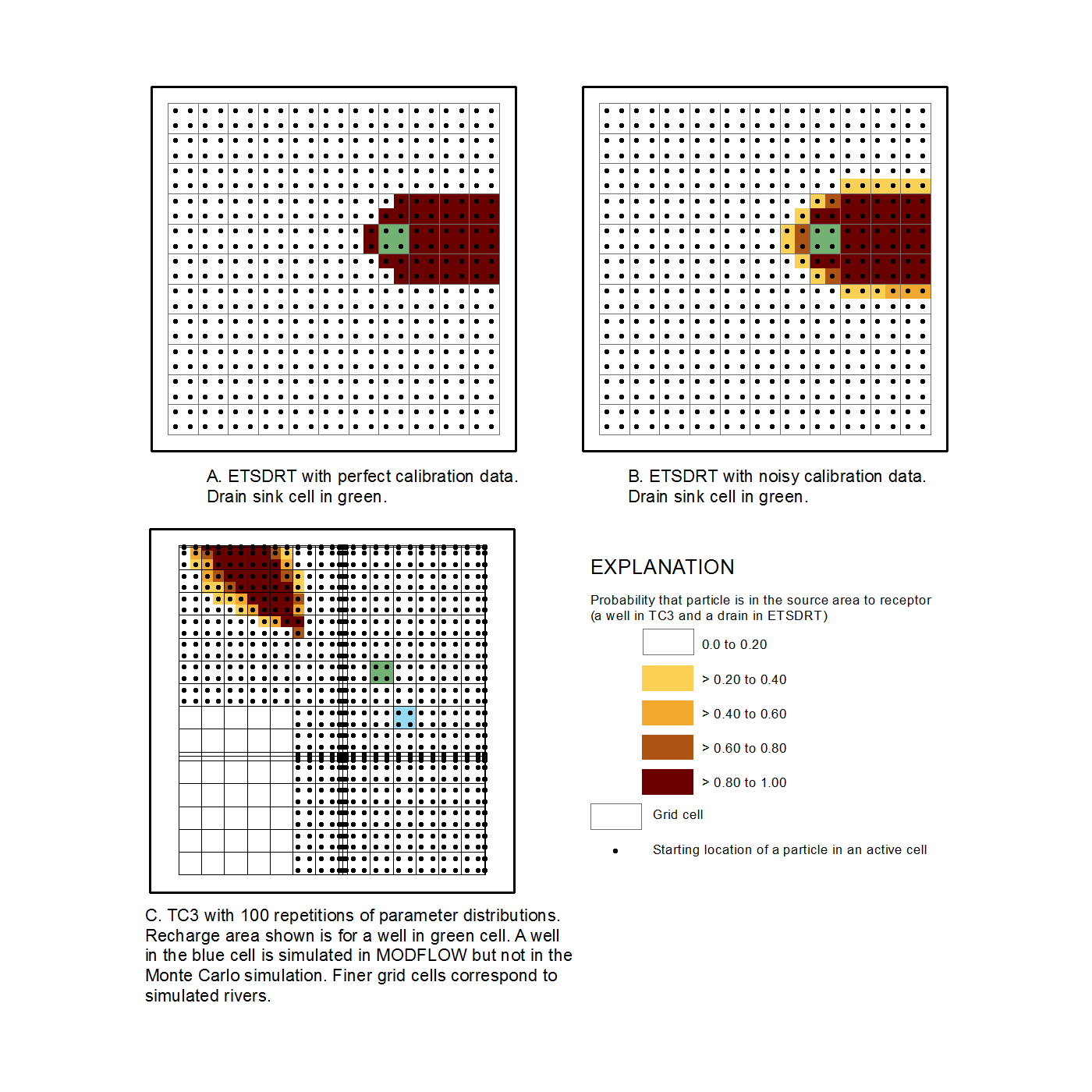Water Resources of the United States

Contributing recharge areas often are delineated using steady-state groundwater-flow and particle-tracking models. The scripts GEN_LHS and MCDRIVER_LHS use the Python scripting language to run a Monte Carlo simulation with Latin Hypercube Sampling (LHS), where model parameters such as hydraulic conductivity and recharge are randomly varied for a large number of model simulations, and the probability of a particle being in the contributing area of a well is calculated based on the results of multiple simulations. Monte Carlo simulation provides one useful measure of the variability in particle locations. The Monte Carlo method described here is unique in that it uses parameter sets derived from the optimal parameters, their standard deviations, and their correlation matrix, all of which are calculated during nonlinear regression model calibration. In addition, this method uses a set of acceptance criteria to eliminate unrealistic parameter sets.
Point of contact for GEN_LHS and MCDriver -- Jeff Starn